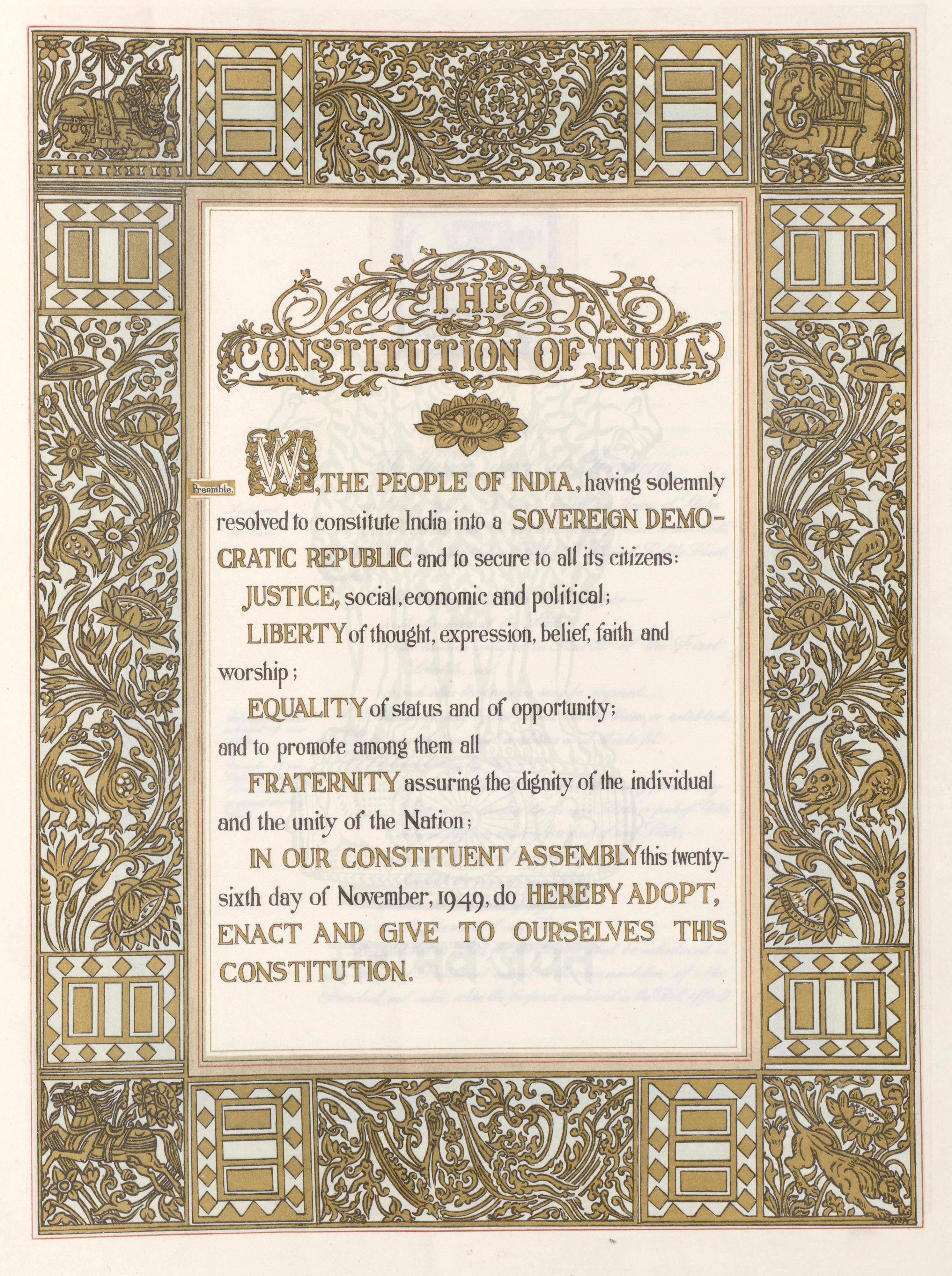History of India
- Introduction to Ancient India
- The Mauryan Empire
- Post-Mauryan India and the Golden Age
- Early Medieval India
- The Delhi Sultanate
- The Mughal Empire - Part I
- The Mughal Empire - Part II
- The Advent of European Powers
- The British Raj - Part I
- The British Raj - Part II
- Independence & Partition
Modern India
Democratic India: The Birth of the World's Largest Democracy

Supreme law of India.
The birth of Democratic India is a fascinating tale of resilience, unity, and the indomitable spirit of a nation. The establishment of the Indian Constitution marked the beginning of a new era in the history of India, transforming it into the world's largest democracy.
The Establishment of the Indian Constitution
The Indian Constitution, adopted on 26th January 1950, is the supreme law of India. It lays down the framework that defines the political principles, establishes the structure, procedures, powers, and duties of the government institutions, and sets out the fundamental rights, directive principles, and duties of citizens. The constitution was drafted by a constituent assembly consisting of 299 members, representing diverse sections of society.
The Role of Dr. B.R. Ambedkar
Dr. B.R. Ambedkar, often referred to as the 'Architect of the Indian Constitution,' played a pivotal role in its formation. As the chairman of the drafting committee, he was instrumental in shaping the constitution that aimed to grant equal rights to every citizen, irrespective of their caste, creed, or religion. His efforts towards social justice and the abolition of untouchability have left an indelible mark on Indian society.
The First General Elections and the Formation of the First Government
The first general elections, held in 1951-52, were a significant milestone in India's democratic journey. Despite the logistical challenges of conducting an election in a country as vast and diverse as India, the elections were successfully held, marking the beginning of a democratic tradition that continues to this day. The Indian National Congress, led by Jawaharlal Nehru, emerged victorious, and Nehru became the first Prime Minister of independent India.
Major Political Parties and Their Ideologies
India's multi-party system has played a crucial role in shaping its democratic fabric. The Indian National Congress, with its ideology of secularism and social democracy, and the Bharatiya Janata Party, with its philosophy of Hindutva and market liberalism, are two of the most prominent political parties. Other significant parties include the Communist Party of India (Marxist), the Bahujan Samaj Party, and regional parties like the All India Anna Dravida Munnetra Kazhagam and the Trinamool Congress.
Landmark Amendments and Supreme Court Judgments
The Indian Constitution, while a robust document, has been amended 104 times as of 2020 to address the changing needs of the nation. Some of the most significant amendments include the 42nd amendment, which gave the constitution primacy over all other laws of the land, and the 73rd and 74th amendments, which strengthened local self-governance.
The Supreme Court of India, as the guardian of the constitution, has delivered several landmark judgments that have shaped India's democratic journey. These include the Kesavananda Bharati case, which established the doctrine of the basic structure of the constitution, and the Shah Bano case, which sparked a debate on uniform civil code.
The story of Democratic India is a testament to the strength of its people and their commitment to democracy. Despite the challenges, India continues to thrive as a vibrant and diverse democracy.